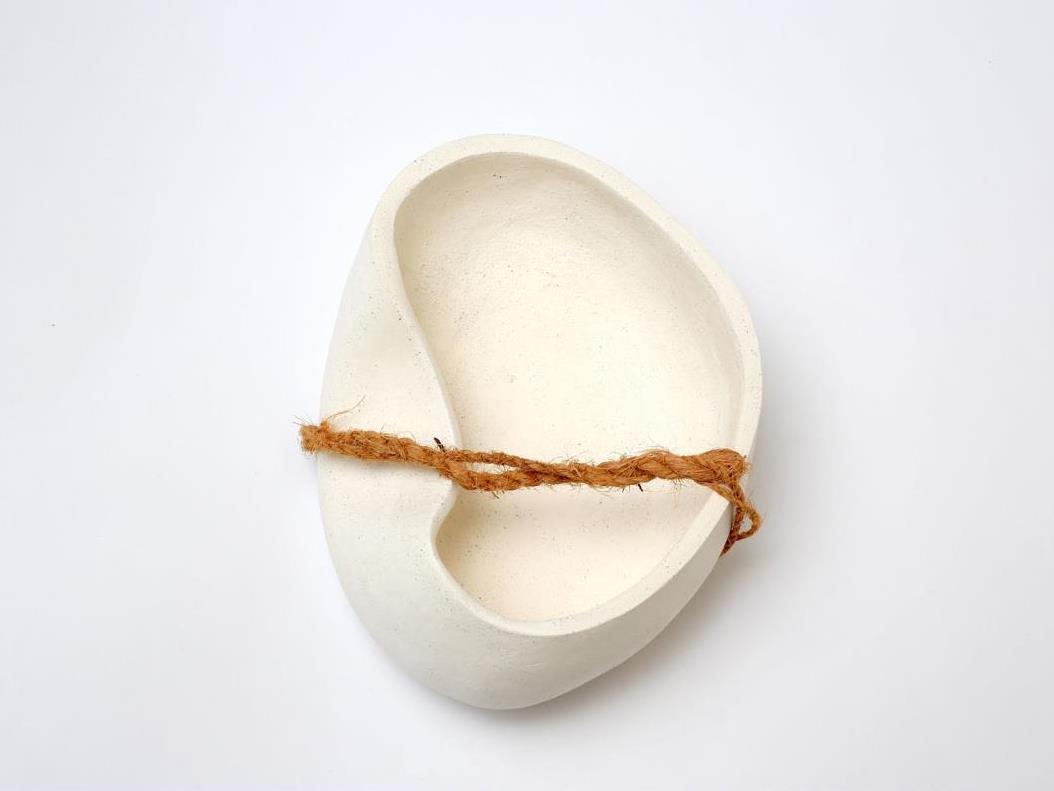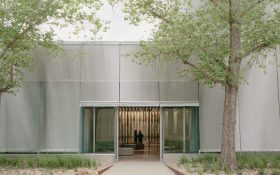Lucy Simpson, yilaalu (detail), 2015, paperclay, ironbark string, feathers, image courtesy and © the artist, photograph: Nicole Foreshew
There is a wonderful materiality present at this year’s Primavera: earthenware, fishing wire, ironbark, ochre, beeswax to name a few, yet on first impression the interlocking spaces are almost sombre in tone. It is only on closer inspection that the tactile beauty of the work is fully encountered and upon further understanding that the intricate storytelling at their centre is revealed.
Celebrating its 24th edition, Primavera, meaning ‘springtime’ in Italian, is an annual exhibition of Australian artists aged 35 and under, held at the Museum of Contemporary Art, Australia. In 2015, Sydney-based Aboriginal artist Nicole Foreshew is the exhibition’s curator and the resulting theme is a thoughtful extension on her own art practice and the cultural resilience and survival it reflects on.
As Foreshew brings together these seven young artists from South West, South Central and South East Australia she creates a safe house for social interaction and a place to contemplate an arising truth; that the questioning of cultural identity is a common thread that binds many young Australians regardless of ancestral origin.
The artwork that emerges from this dangling plane is a reflection on the collective consciousness born from Indigenous Australia’s broken past, and the histories of other cultures that struggle to contextualise their place here within.
Abdul Abdullah, with his distorted large-scale portraits of family and friends, works in painting and photography to explore society’s misguided perception of young Muslim Australians.
For Taloi Havini, it was following her family’s political exile to Australia in 1990 that she began to document her journey’s home to the north of Buka Island, in the Autonomous Region of Bougainville. Reflecting on the still visible aftermath of conflict and changing economic factors, Havini creates traditional shell money from extracted earth materials in a sweeping display of patience and cultural preservation.
Lucy Simpson similarly connects her work to an ancient and living history of trade and material cultures by knotting ochre-stained string of varying widths. A Yuwaalaraay woman belonging to the freshwater country of the Walgett, Lightning Ridge and Angledool areas of New South Wales, Simpson creates an 8m long artwork titled Yilaalu to encapture the making of time and symbolically unite old and new Aboriginal traditions.
It is the complex and untold history of Australia’s first contact that Steaphan Paton draws upon in his video installation Cloaked Combat #2 & Cloaked Combat #3. Draped in camouflage and shooting arrows through hand crafted bark shields cut from trees on his Gunai homelands, Paton appears unmotivated by anger but rather the bearer of a greater responsibility as custodian of such knowledge.
That is what is so successful about Foreshew’s Primavera; the sacred, knowing and often bloodied whispers of generations are all around yet there is a sense of calm and encouragement that does not exclude its audience from the conversation.
Budding curators take note, for this is an exhibition that strikes a gentle, harmonious chord.
Rating: 4 out of 5 stars
Primavera 2015
Museum of Contemporary Art, Sydney
Exhibition continues to 6 December 2015
Free Entry





